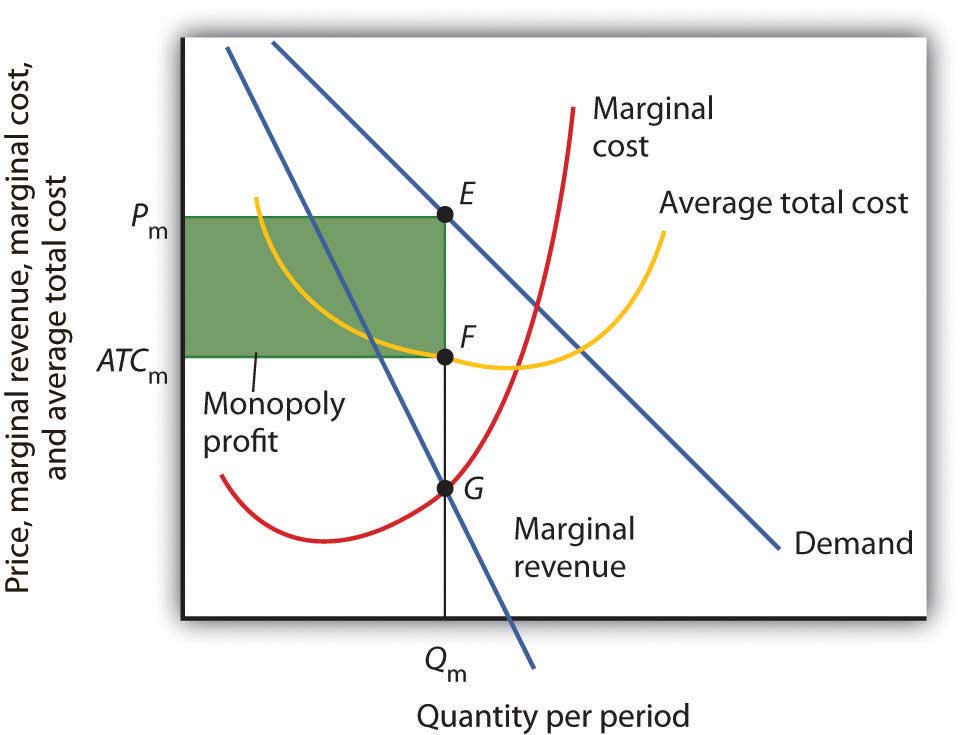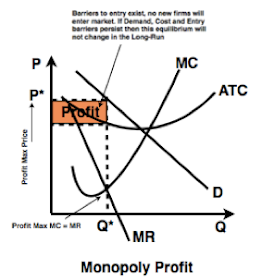

The farmer has an incentive to keep producing. If the farmer started out producing at a level of 60, and then experimented with increasing production to 70, marginal revenues from the increase in production would exceed marginal costs-and so profits would rise. In this example, the marginal revenue and marginal cost curves cross at a price of $4 and a quantity of 80 produced.

You will notice that what occurs on the production side is exemplified on the cost side. The firm’s profit-maximizing choice of output will occur where MR = MC (or at a choice close to that point). If the firm is producing at a quantity where MC > MR, like 90 or 100 packs, then it can increase profit by reducing output because the reductions in marginal cost will exceed the reductions in marginal revenue. If the firm is producing at a quantity where MR > MC, like 40 or 50 packs of raspberries, then it can increase profit by increasing output because the marginal revenue is exceeding the marginal cost. But then marginal costs start to increase, displaying the typical pattern of diminishing marginal returns. In the raspberry farm example, shown in This figure, this figure and this table, marginal cost at first declines as production increases from 10 to 20 to 30 packs of raspberries-which represents the area of increasing marginal returns that is not uncommon at low levels of production. Ordinarily, marginal cost changes as the firm produces a greater quantity. This condition only holds for price taking firms in perfect competition where: In this example, every time a pack of frozen raspberries is sold, the firm’s revenue increases by $4. This also means that the firm’s marginal revenue curve is the same as the firm’s demand curve: Every time a consumer demands one more unit, the firm sells one more unit and revenue goes up by exactly the same amount equal to the market price.

As mentioned before, a firm in perfect competition faces a perfectly elastic demand curve for its product-that is, the firm’s demand curve is a horizontal line drawn at the market price level. The marginal revenue curve shows the additional revenue gained from selling one more unit. This figure presents the marginal revenue and marginal cost curves based on the total revenue and total cost in this table. In economic terms, this practical approach to maximizing profits means looking at how changes in production affect marginal revenue and marginal cost. They produce a slightly greater or lower quantity and observe how profits are affected. They cannot be sure of what total costs would look like if they, say, doubled production or cut production in half, because they have not tried it. Comparing Marginal Revenue and Marginal Costsįirms often do not have the necessary data they need to draw a complete total cost curve for all levels of production.


 0 kommentar(er)
0 kommentar(er)
